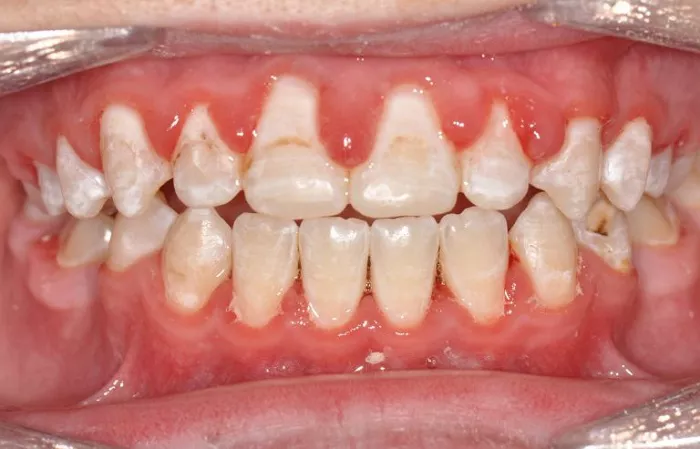In the world of orthodontics, the question of whether braces can be worn is a common concern for patients. The relationship between tooth decay and braces is not always straightforward and involves all aspects of oral health, from the structural integrity of the teeth, to the potential for bacterial growth and infection, to the smooth progression of orthodontic treatment and the ultimate achievement of corrective results.
The Importance of Oral Health Before Braces
Before delving into the specifics of cavities and braces, it’s essential to understand the significance of overall oral health prior to starting orthodontic treatment. Orthodontists typically conduct a comprehensive dental examination before fitting braces. This examination assesses not only the alignment of the teeth but also the health of the teeth and gums. Good oral health is the foundation for a successful orthodontic journey. If there are underlying dental issues, such as cavities, they need to be addressed to ensure the best possible outcome.
The Impact of Cavities on Braces Treatment
Infection Risk:
Cavities are areas of tooth decay that can harbor bacteria. When braces are placed, they create additional nooks and crannies where food particles can get trapped. If there are cavities present, the risk of bacterial infection spreading beneath the braces and into the deeper layers of the tooth increases. This can lead to more severe dental problems such as abscesses, which are painful and can cause damage to the pulp of the tooth.
Treatment Delays:
If cavities are discovered during the initial examination for braces, the orthodontist will likely recommend that they be treated first. This means that the start of the braces treatment may be delayed until the cavities are filled. For example, if a patient has multiple cavities, it could take several dental appointments to address them all, postponing the braces application by a few weeks or even months.
Effectiveness of Tooth Movement:
Cavities can weaken the structure of the tooth. When braces exert force to move the teeth, a weakened tooth may not respond as well or could potentially be damaged further. This could impact the overall effectiveness and efficiency of the orthodontic treatment, as the desired tooth movements might not occur as planned.
Treatment Options for Cavities Before Braces
Filling Cavities:
The most common treatment for cavities is a dental filling. The dentist will remove the decayed portion of the tooth and fill the cavity with a suitable material such as composite resin or amalgam. This restores the integrity of the tooth and prevents further decay. Once the filling is in place and the tooth has healed, it is generally safe to proceed with braces treatment. For example, a small cavity on the surface of a molar can be easily filled, and after a short recovery period, the patient can move forward with getting braces.
Root Canal Treatment:
In more severe cases where the cavity has reached the pulp of the tooth, a root canal treatment may be necessary. This involves removing the infected pulp, cleaning and disinfecting the root canals, and then filling and sealing them. After a root canal, the tooth is often crowned to provide additional strength and protection. Although this is a more involved and costly procedure, it can save a severely damaged tooth and allow for braces treatment to be carried out once the tooth has fully recovered, which usually takes a few weeks to a few months.
Preventing Cavities During Braces Treatment
Oral Hygiene Practices:
Maintaining excellent oral hygiene is even more critical when wearing braces. Patients should brush their teeth at least twice a day using a soft-bristled toothbrush and fluoride toothpaste. Special attention should be paid to cleaning around the brackets and wires. Flossing is also essential, and floss threaders can be used to get under the wires and clean between the teeth. For example, patients can use an interdental brush to reach those tight spaces around the braces and remove any food debris that could lead to cavities.
Dietary Considerations:
Limiting the intake of sugary and acidic foods and drinks is important. These substances can erode tooth enamel and increase the risk of cavities. Instead, patients should opt for a balanced diet rich in fruits, vegetables, whole grains, and lean proteins. For instance, choosing water or milk over soda and snacking on carrots or apples instead of candy bars can significantly reduce the likelihood of developing cavities while wearing braces.
Regular Dental Check-ups:
During braces treatment, patients should continue to visit their dentist regularly for check-ups and cleanings. The dentist can monitor the teeth for any signs of new cavities or other dental problems and provide professional cleanings to remove plaque and tartar buildup that may be difficult to reach with regular brushing and flossing. These check-ups are usually scheduled every 4 to 6 months but may be more frequent if there are specific concerns.
Conclusion
In conclusion, while it is possible to get braces with cavities, it is not advisable without first addressing the cavity issue. Cavities can pose risks to the success of braces treatment and the overall health of the teeth. By ensuring that any existing cavities are treated before starting braces and maintaining good oral hygiene and a healthy diet during treatment, patients can minimize the potential for further dental problems and increase the likelihood of a smooth and effective orthodontic experience. It is always important to have an open and honest discussion with your orthodontist and dentist about your oral health history and any concerns you may have.

